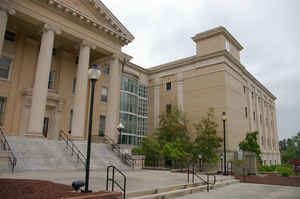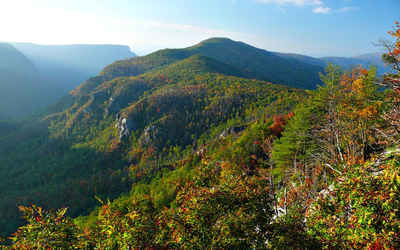North Carolina Counties
North Carolina is divided into one hundred counties. The establishment of North Carolina counties stretches over 240 years, beginning in 1668 with the creation of Albemarle County and ending with the 1911 creation of Avery and Hoke counties. Five counties have been divided or abolished altogether, the last being Dobbs County in 1791.Wayne County, North Carolina
Wayne County Education, Geography, and History
Wayne County is a county located in the state of North Carolina. Based on the 2010 census, the population was 122,623. Its county seat is
Goldsboro and it is home to Seymour Johnson Air Force Base.
Wayne County comprises the Goldsboro, NC Metropolitan Statistical Area.
Etymology - Origin of Wayne County Name
It was named in honor of Anthony Wayne, one of Washington's most trusted soldiers.
Demographics:
County QuickFacts: CensusBureau Quick Facts
Wayne County History
Wayne was formed in 1779 from Dobbs. It was named in honor of Anthony Wayne, one of Washington's most trusted soldiers. It is in the eastern section of the State and is bounded by Greene, Lenoir, Duplin, Sampson, Johnston and Wilson counties. The present land area is 552.57 square miles and the 2000 population was 113,329. The act establishing the county provided that the first court should be held at the home of Josiah Sasser at which time the justices were to decide on a place for all subsequent courts until a courthouse could be erected. By 1782 the commissioners were named. In 1787 an act was passed establishing Waynesborough on the west side of the Neuse on the land of Andrew Bass "where the courthouse now stands." In 1845, and again in 1847, acts were passed moving the courthouse from Waynesborough to Goldsboro provided the people voted for the same. Goldsboro is the county seat.
Geography: Land and Water
As reported by the Census Bureau, the county has a total area of 557 square miles (1,440 km2), of which 553 square miles (1,430 km2) is
land and 3.8 square miles (9.8 km2) (0.7%) is water.
Wayne County's surface is level to gently rolling uplands with broad bottoms along the rivers and some creeks. Elevations are predominantly
120 to 145 feet above sea level. The largest waterway, the Neuse River, bisects the lower central portion of the county and cuts a deep
channel 20 to 40 feet deep as it flows in an eastward direction. Unusual river bluffs occur in the vicinity of Seven Springs. In addition to
the Neuse River, the county is drained by the Little River, the Northeast Cape Fear River and numerous creeks.
Wayne County is underlain by unconsolidated beds of sand, clay and gravel. For the most part, these beds were deposited in seawater as the sea
advanced and retreated during the geologic development of the Atlantic Coastal Plain. To a much lesser extent, streams deposited layers of
sediment which mixed with that deposited on the sea floor.
The climate in Wayne County is characterized by warm summers and moderate winters. The average temperature is about 62 degrees. Annual
precipitation is about 50 inches of rainfall per year, with the major portion occurring in the late spring and summer.
Neighboring Counties
Bordering counties are as follows:
- Wilson County - north
- Greene County - east-northeast
- Lenoir County - east-southeast
- Duplin County - south
- Sampson County - southwest
- Johnston County - west
Education
Wayne County is home to three colleges: Wayne Community College, University of Mount Olive, formly known as Mount Olive College and the
Goldsboro campus of the North Carolina Wesleyan College.
Public schools are administered by the Wayne County Public Schools system. The public schools include nine high schools and college
preparation schools, eight middle schools and fourteen elementary schools. The county is also home to four private schools and one charter
public school.







